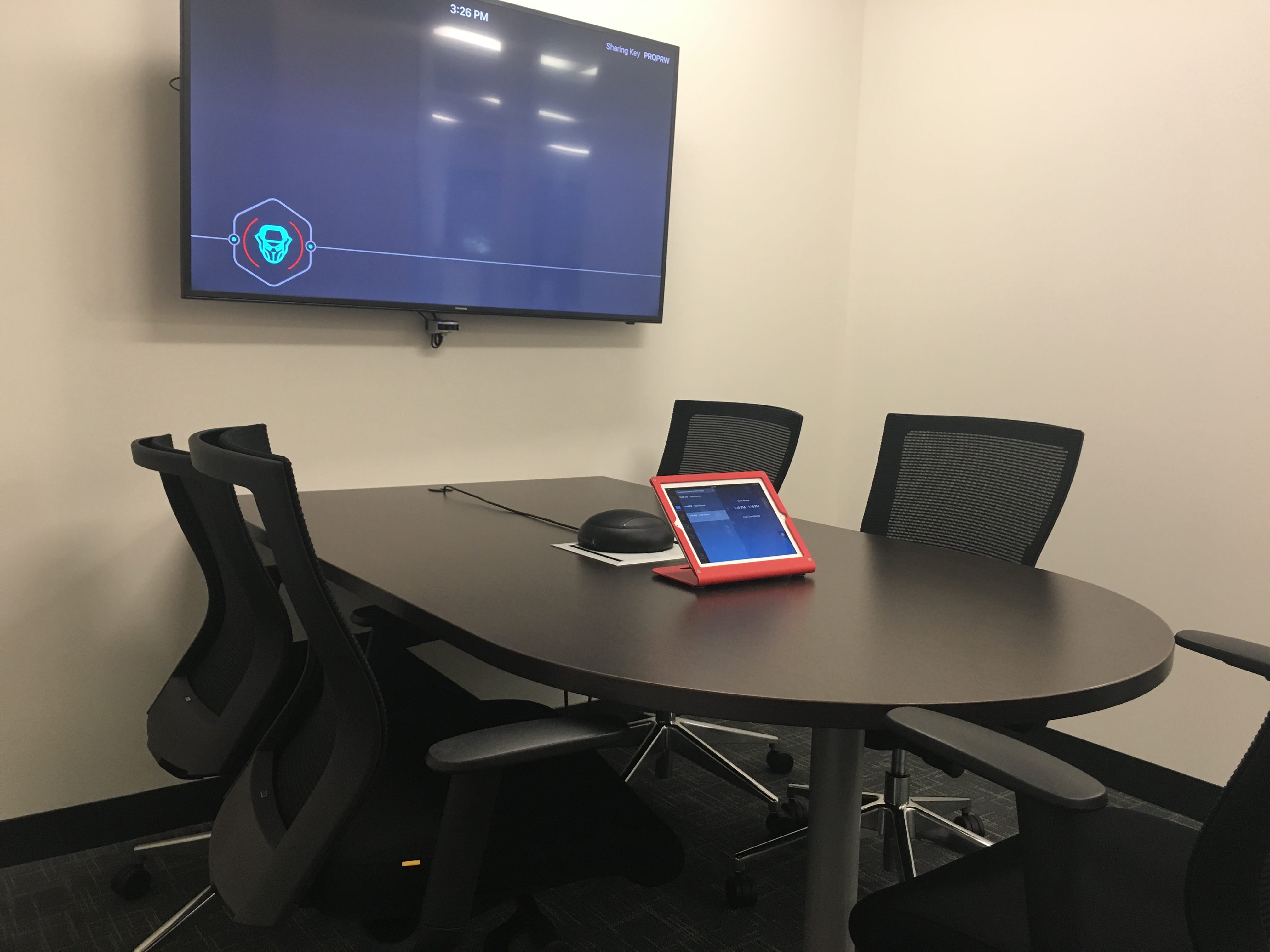Time for Video Conferencing in All Your Meeting Rooms
Posted by Ryan Pinke on 2/20/2018
Most people have hear of Zoom, Skype, Hangouts, or have attended an online meeting/webinar. Today, it is the most convenient way to get lots of people together. And the majority of companies give their employees access to one of these applications to make one-on-one video calls, voice calls, or instant messages. So at this point, most people know (or at least aware of) the advantages of implementing videoconferencing within your company, if you don't yet, here are a few of them (based upon today's technology):
- It costs significantly less today to video-enable a conference room today. Case in point, we have more than 20 pre-bundled, ready to go kits for under $5,000 and the majority of those are under $3,000. For most companies, their table and chairs will cost more.
- You'll recover your investment quickly, usually in the first year, just from the saving you get from not needing to travel. That is especially true if you have a disperse team (remote workers), but the saving in time just traveling across most cities is worth it.
- Expand your business without traveling. This one is often overlooked, but instead of thinking about your conference rooms as being just spaces to meet, they can also become virtual sales meeting with customers - have a bigger team involved (because the place is less important than the time) and present materials, or get on a white board - your video conferencing equipment can handle all of it.
- Keep everyone connected - both inside and outside your company. Another huge aspect of video conferencing is "seeing the other person". Humans are much more visual in our communications, with facial expressions and body language, if you are on the phone, or using email/text, we miss out on a large part of effectively communicating with other people.
That's just a recap - today, it's more and more important to stay connected with your team, your business partners, and your customers. Video conferencing is the platform to achieve that. What most people don't know is that the same application that makes video conferencing between two people extremely simple, can also be extended to the conference room.
Even if everyone in your company is setup with Zoom, Skype, Ringcentral, or whatever platform you're using - you're not getting the biggest benefits if you also haven't video enabled your meeting rooms. Yes, you can do one-on-one meetings, or even get a couple people crowded around on laptop or desktop camera - but there's a huge difference between that and having the room itself become integrated INTO the platform.
Imagine for a minute, the difference between hosting a meeting in your favorite conference room, sitting down with the people in the room, hitting a couple buttons on an iPad, and boom, you're video meeting has started. You can see all the online participants on the monitors, and your participants can see everyone in the room, and hear there perfectly.
Compare that to ...
You enter the same conference room, you set up your laptop at the head of the table, start your video conference meeting, and can't really see any of the online particpants, and they hear more room noise than people speaking (usually off camera).
They are literally, two different meeting experiences, for everyone involved.
That when we hear the question "…but is it worth the money?" we always say YES. Not because we want to sell them something (although we do), but because it's true. If you're already spending money every month on your video conferencing platform, and you know your employees are using it, then it's like putting that platform on steroids. In fact, we've seen companies "test" it out with one or two rooms, and within a month or two, come back with a plan to enable all their conference rooms.
But what makes up a "Video Conferencing Meeting Room"?
Although there lots of different configurations, based upon the room, what kinds of meetings you generally have, and the how you want to use it, a video conferencing room comes down to three primary components - the camera, the audio, and the controls. A fourth element, which is more specific to how you're using the room is displays (or monitors).

Each of these are key elements, and have to be considered separately as you make decisions with your meeting room. Details of the equipment is important, but more important is making it easy for your employees to use. "Don't make me think" is a user mantra within our technology age, which mean eliminating as much of the complexity as possible, we all want for thing to just "work" - with the touch of screen, we want our meetings to start, and everything work as expected. The goal is meeting, not the technology - so the anything we do to make it simple is worth the effort. The best result for you and your support staff is never get a call or text message from frustrated users.
Just as important (or possibly more important) is HOW you will use your rooms. There is a significant difference between casual meeting rooms, full blown project or sales war rooms, training and classrooms, or even that meeting space where two or three people get together. It's important because how you use the room will determine the choices around the products you buy. Usually, after we talk someone through the benefits and cost savings, we jump directly into "use". It really is that important into creating the best video conferencing room for your company.
One of other thing to mention, is type and size of the room layout. Both of those will eliminate certain products immediately. There are products specifically made for open space huddle rooms and completely different products for interactive classrooms. Although most cameras today can deal with a variety of lighting conditions, some do a better job than others - for either very bright or very dark spaces.
To recap - as you investigate taking the next step with video conferencing - and looking to video enable your meeting spaces, remember these three important areas:
- You'll need specific products to create a "don't make me think" video conferencing meeting room, they include the camera, audio, room controls and displays/monitors.
- How you plan to use the meeting space determines which products to purchase.
- The meeting space itself (open or enclosed, lighting, size) is a great starting point when first investigating which products fit best for your requirements.
As stated earlier, we have pre-bundled, pre-configured room kits for the most popular platforms on the market today - Zoom, Skype for Business, Ringcentral, Google Hangouts Meet - check them out to get a better understanding of what's required and some of the market leading companies in the video conferencing industry.
